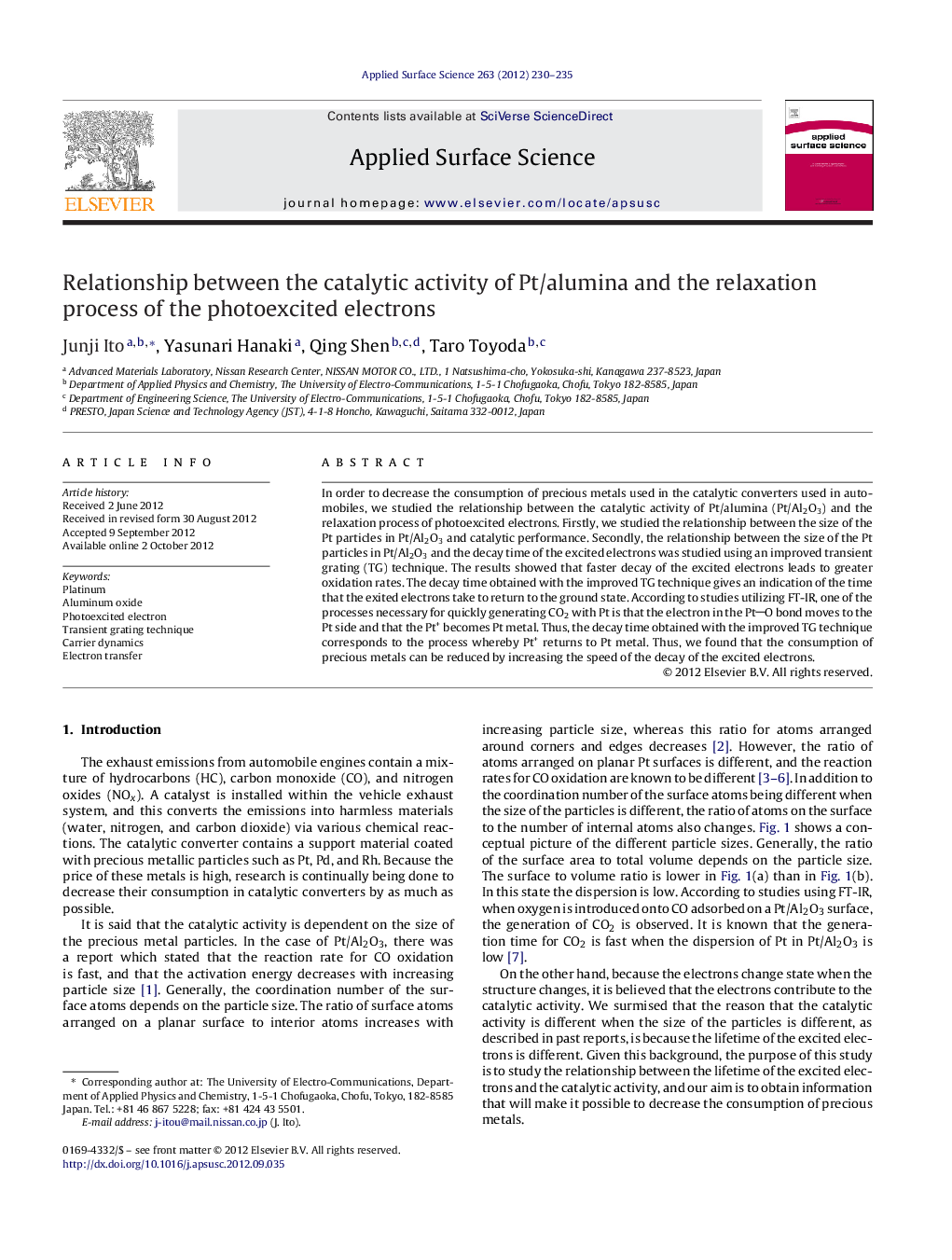| Article ID | Journal | Published Year | Pages | File Type |
|---|---|---|---|---|
| 5364163 | Applied Surface Science | 2012 | 6 Pages |
In order to decrease the consumption of precious metals used in the catalytic converters used in automobiles, we studied the relationship between the catalytic activity of Pt/alumina (Pt/Al2O3) and the relaxation process of photoexcited electrons. Firstly, we studied the relationship between the size of the Pt particles in Pt/Al2O3 and catalytic performance. Secondly, the relationship between the size of the Pt particles in Pt/Al2O3 and the decay time of the excited electrons was studied using an improved transient grating (TG) technique. The results showed that faster decay of the excited electrons leads to greater oxidation rates. The decay time obtained with the improved TG technique gives an indication of the time that the exited electrons take to return to the ground state. According to studies utilizing FT-IR, one of the processes necessary for quickly generating CO2 with Pt is that the electron in the PtO bond moves to the Pt side and that the Pt+ becomes Pt metal. Thus, the decay time obtained with the improved TG technique corresponds to the process whereby Pt+ returns to Pt metal. Thus, we found that the consumption of precious metals can be reduced by increasing the speed of the decay of the excited electrons.
⺠We determined the decay time of photoexcited electrons of Pt/Al2O3. ⺠Faster decay of excited electrons in Pt/Al2O3 leads to its faster oxidation rate. ⺠Decreasing excited electron lifetime in Pt/Al2O3 may decrease Pt consumption in catalytic convertors.
